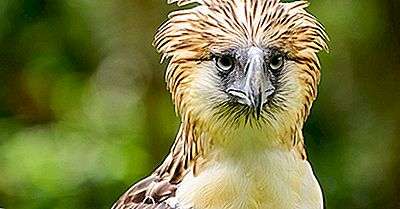Eagles are birds of prey synonymous with strength, power and tenacity. They are graceful birds used as national symbols in many countries such as the United States and Japan. In the avian kingdom, eagles are at the top of the food chain. Their ability to adapt to endemic environments has made them very efficient birds in terms of prey hunting and resistance to the most difficult environmental conditions. These heavily constructed birds have attracted interest from scientists and researchers who are studying their unique habitats and adaptations. Below are some of the largest eagles in the world in terms of overall length, wingspan and body mass.
8. Philippine eagle
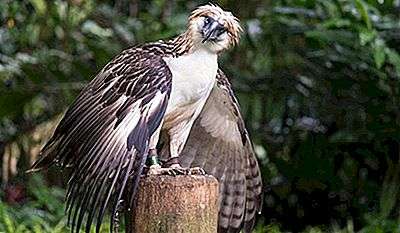
The Philippine eagle is the largest and heaviest known eagle. As the name suggests, it is endemic to the tropical forests of the Philippines. It is a relatively unknown bird mainly due to its exotic origin and the small wild population. This eagle is currently facing the danger of extinction due to the exploitation of its habitat. It is endemic to four main islands of the Philippines, such as Luzon, Mindanao, Samar and Leyte. There are between 82-233 on the island of Mindanao a majority of the population. Long brown feathers on the head form an impressive mane look. The Philippine eagle, also known as the great monkey-eating eagle, has a wingspan of between 184-220 cm and a body weight of 4.5kg-8kg. Since July 1995, the Filipino eagle has become the national animal of the Philippines. Although considered the largest eagle, it does not have the longest span due to its habitat preferences for thick forests and woodlands which require limited span for maximum maneuvering in spaces condensed.
7. Steller’s sea eagle
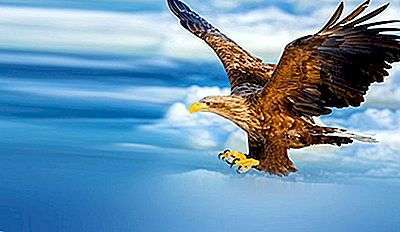
The Steller’s Eagle is one of the largest birds of prey found in the coastal areas of northeast Asia, where its main prey are fish and seabirds. It is a powerful and strongly built bird with bright, contrasting colors. Most of the time, it is covered with black feathers, except on the wings of the shoulders and on the legs and lower body, which are much shinier. Its wedge-shaped tail is longer than that of the white-tailed eagle. The length of the Steller’s body ranges from 85 cm to 105 cm, while its wingspan varies between 1.95 m and 2.5 m. Its beak and talons are bright yellow.
6. Harpy eagle
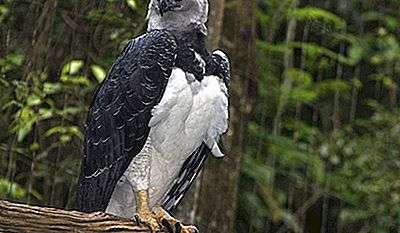
The harpy eagle is a powerful bird of prey and one of the largest in the world. It has huge, solid talons that can be compared to a bear’s claws, and its legs can be as thick as a human wrist. With a wingspan of up to 2, it is a good navigator in Central and South America. The harpy eagle is the national bird of Panama. A long tail, broad, rounded wings allow the harpy eagle to navigate the tropical forests of South America. Like many forest raptors, its wings are well adapted to forest cover and allow it to avoid branches. The adult harpy eagle has black feathers on the main body and gray head and neck.
5. White tailed eagle
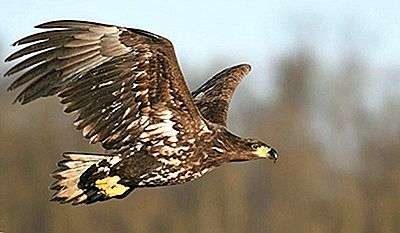
The white-tailed eagle is the largest eagle in Europe and has a shiny white tail while the rest of the body is almost entirely brown. It has a prominent head and beak that projects forward, almost giving it a vulture-like profile. The legs, feet, eyes and beak are yellow. It has a wingspan of 193-244 cm and a length of 74-92 cm. The white-tailed eagle is found in many habitats such as the lowlands and near water bodies. They hunt and feed on a wide variety of mammals, fish and birds. Fish is the main diet, while mammals such as fox and deer have been recorded as regular prey.
4. Martial eagle
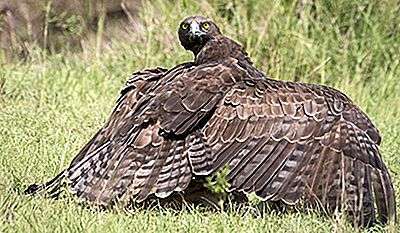
The martial eagle is one of the most impressive African eagles and the largest and most powerful bird of prey in Africa. The martial eagle weighs approximately 6.6 kg and has a wingspan of over 6 feet 4 inches long. It has dark brown upperparts and a white belly with black streaks. It has very powerful talons for tearing and holding prey. Its diet is mainly composed of mammals, feeding on small antelopes, domestic goats, hyrax and lambs. On various occasions, the martial eagle has been observed prey to large birds such as the European stork. Its habitat includes the African savannah and the shrub regions of the South Cape. It breeds at the edge of the forest.
3. Australian Tail Tail Eagle
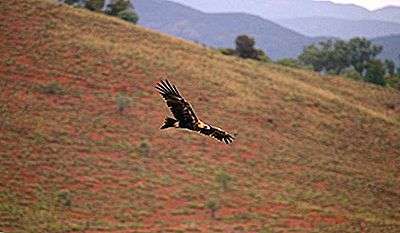
The Australian Eagle is the largest bird of prey in Australia and New Guinea. It is also known as Bunjil or Eaglehawk. It has a long wingspan of up to 2.3 and the characteristic wedge-shaped tail. The feet are covered with feathers to the base. It has a pale bill, white feet and a dark brown color around the eyes. The bunjil weighs between 3.2 kg and 5.3 kg, the females being heavier than the males. This bird can be found in regions at sea level and in mountainous regions. It is mainly found in open lands, wooded and wooded landscapes.
2. Golden eagle
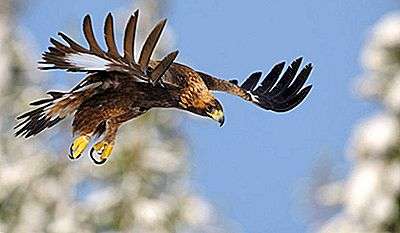
The golden eagle is the most popular national bird in countries such as Germany, Austria, Mexico and Albania. It is very common in the northern hemisphere and the most widespread species of eagle. It is the most powerful bird of prey in North America and known for its speed and strength. It is dark brown with a golden brownish color around the neck and head. It feeds on small mammals such as the hare and can sometimes attack large mammals such as lambs, goats and other domestic animals. It has a wingspan of 185-220 cm and weighs between 3.1 kg-6.2 kg. The golden eagle can be found in the open countryside with natural vegetation that allows it to easily spot prey. They also prefer high areas such as mountains, the cliffs by the river and the canyons. Currently, the golden eagle population appears to be stable.
1. Haast’s Eagle
The Haast’s eagle is currently an extinct species that once lived on the southern islands of New Zealand. It was the largest eagle to have lived in its time and the most ferocious predator in its ecosystem. It had wings suitable for flapping and maneuvering in dense forest vegetation. The Haast’s eagle has attacked flightless birds such as the moa. This giant eagle weighed up to 17.8 kg and had a wingspan of 3 meters. Due to its large size and the continuous decline of flightless birds, it reached the maximum size limit during evolution, which ultimately led to its extinction.

